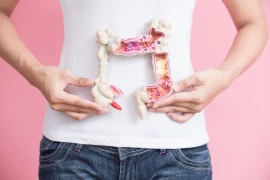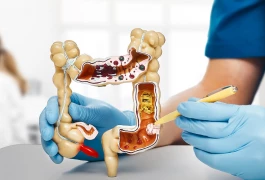
What is Dumping Syndrome, What Are Its Symptoms, How Is It Diagnosed?
- What is Dumping Syndrome, What Are Its Symptoms, How Is It Diagnosed?
- What Can Be Done to Prevent This Syndrome?
- How Is Dumping Syndrome Treated?
- How is the Dumping Syndrome Test Done?
Dumping syndrome can be defined as a symptom characterized by rapid gastric emptying that may occur after surgery to remove part or all of the stomach or after gastric bypass surgery. It is known as a disease that can cause symptoms such as abdominal pain, diarrhea, vomiting, palpitations and cramps. Dumping syndrome usually occurs 10 to 30 minutes after a meal due to the uncontrolled discharge of food from the stomach into the small intestine. This condition develops suddenly and quickly, especially after eating sugary foods.
It is characterized by abdominal pain and diarrhea accompanying abdominal pain that occurs after gastric reduction surgery and after eating carbohydrate-based foods. The symptoms of dumping syndrome are classified into two groups: symptoms of early dumping syndrome and symptoms of late dumping syndrome. The first symptoms of early dumping syndrome are diarrhea and abdominal pain that occur within 30 minutes of eating foods containing carbohydrates. Abdominal pain and diarrhea are considered a sign of late dumping syndrome if they occur 3 hours or later instead of the first 30 minutes.
What Can Be Done to Prevent This Syndrome?
The course of treatment may be different for each person. While most patients can be treated with dietary changes, surgery or medication may be appropriate in some patients due to the severe course of dumping syndrome.
- Consumption of sugary foods and beverages should be reduced or avoided.
- It is known that sugar is found in alcohol and dairy products and should be suitable for proper nutrition for children.
- Complex carbohydrates containing fiber should be included in the diet instead of simple carbohydrates.
- Food should be eaten in small portions.
- Food should be chewed thoroughly before swallowing.
- Stop eating before you are full.
- It is not recommended to consume solid foods and liquids together.
- In case of fluid intake, it should be taken half an hour before or after meals.
How Is Dumping Syndrome Treated?
Diet:
The most important treatment in these patients is diet change. Carbohydrates and simple sugars should be avoided, and foods rich in protein and fiber should be consumed. Consuming fiber-rich foods can prevent symptoms as they slow stomach emptying and move it quickly into the intestines. It is important not to consume liquids with food, as it will accelerate gastric emptying. Food should be chewed well and eaten slowly. Therefore, there is improvement.
Medicine:
Medication may be considered for a patient whose withdrawal symptoms persist despite dietary changes.
Surgical treatment:
Patients who do not respond to medications and diet can be treated surgically. Various corrective surgeries can be performed in patients who have undergone gastric bypass surgery and develop catching syndrome. These processes are difficult and require experience, which can take up to 7-8 hours.
How is the Dumping Syndrome Test Done?
Gastric Emptying Test:
This test measures how well a patient's stomach empties within 1 to 4 hours after a meal. A meal containing radioactive material is eaten shortly before the test. Accordingly, gastric emptying test is performed.
Gastroscopy:
It is done with a thin endoscope with a camera and a light source. The esophagus, stomach, and duodenum are examined and various medical problems that may be causing the problem are checked.
Glucose Tolerance Test:
After a minimum of 8 hours of fasting, blood is drawn and blood sugar is checked. Immediately afterwards, the glucose-containing liquid was taken orally. A blood sample is taken from the patient every 30 minutes for a maximum of 3 hours. It is done to correct blood sugar.
In cases where the symptoms of this syndrome do not decrease with these behavioral changes, treatment options may need to be discussed. Interviews between the patient and the surgeon, the general health status of the patient and the results of the examination are important requirements in determining the personalized treatment plan.





